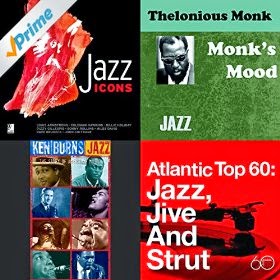Living Rich: 5 Classic Jazz Albums
By Jason Holland

It doesn’t matter if you’re a millionaire, a billionaire, or barely
scraping by – everyone can listen to the exact same music. Audiophiles
might disagree and swear that thousands of dollars’ worth of equipment
is necessary for true enjoyment. Still, anyone can buy a CD (or MP3 online) and be affected by a piece of music in the same way.
Jazz has a powerful transformative quality. It may not get the
headlines or have the Top 40 success of pop, rock, hip hop, and R & B, but that’s the point. This is not throwaway music that will be
forgotten in a month. Jazz songs and albums are created with passion by
musicians who have dedicated their lives to their craft. It’s for the
ages.
There is a lot of good jazz coming out these days. But right now, I want to introduce you to five classics of the genre.
You’ve no doubt heard the most popular track from this album, “Take Five.” It’s a mainstay of movie, TV, and commercial scores. This album is also known for its use of time signatures (in simple terms, the beat) not usually used in jazz.
This classic disc has been cited as the best jazz album ever by many critics. Davis assembled a group of session musicians for the project. And with almost no rehearsal, they started recording with just brief instructions on what scales and melodies to use as the basis for improvisation.
Many critics consider this album to be heavily influenced by Mingus’s love of early jazz innovators like Jelly Roll Morton, Duke Ellington, and Lester Young. It has been included in the Library of Congress’s recorded music collection.
Coleman was a pioneer of “free jazz,” an avant-garde style that split the jazz community in the late 1950s. This album introduced Coleman’s unusual style to a wide audience. Some critics found his work to be almost unlistenable, while others considered it to be groundbreaking.
Listening to the above classics will give you a basis to appreciate
all the jazz you’ll ever hear. And you’ll get a feel for how they have
influenced musicians in every genre.
__________________________________________________
This article appears courtesy of Early to Rise [Issue #2384, 06-17-08], the Internet's most popular health, wealth, and success e-zine. For a complimentary subscription, visit http://www.earlytorise.com/.

You’ve no doubt heard the most popular track from this album, “Take Five.” It’s a mainstay of movie, TV, and commercial scores. This album is also known for its use of time signatures (in simple terms, the beat) not usually used in jazz.
This classic disc has been cited as the best jazz album ever by many critics. Davis assembled a group of session musicians for the project. And with almost no rehearsal, they started recording with just brief instructions on what scales and melodies to use as the basis for improvisation.
Many critics consider this album to be heavily influenced by Mingus’s love of early jazz innovators like Jelly Roll Morton, Duke Ellington, and Lester Young. It has been included in the Library of Congress’s recorded music collection.
Coleman was a pioneer of “free jazz,” an avant-garde style that split the jazz community in the late 1950s. This album introduced Coleman’s unusual style to a wide audience. Some critics found his work to be almost unlistenable, while others considered it to be groundbreaking.
- Stan Getz and Joao Gilberto’s Getz/Gilberto (featuring Antonio Carlos Jobim)
__________________________________________________
This article appears courtesy of Early to Rise [Issue #2384, 06-17-08], the Internet's most popular health, wealth, and success e-zine. For a complimentary subscription, visit http://www.earlytorise.com/.




0 Comments:
Post a Comment
<< Home